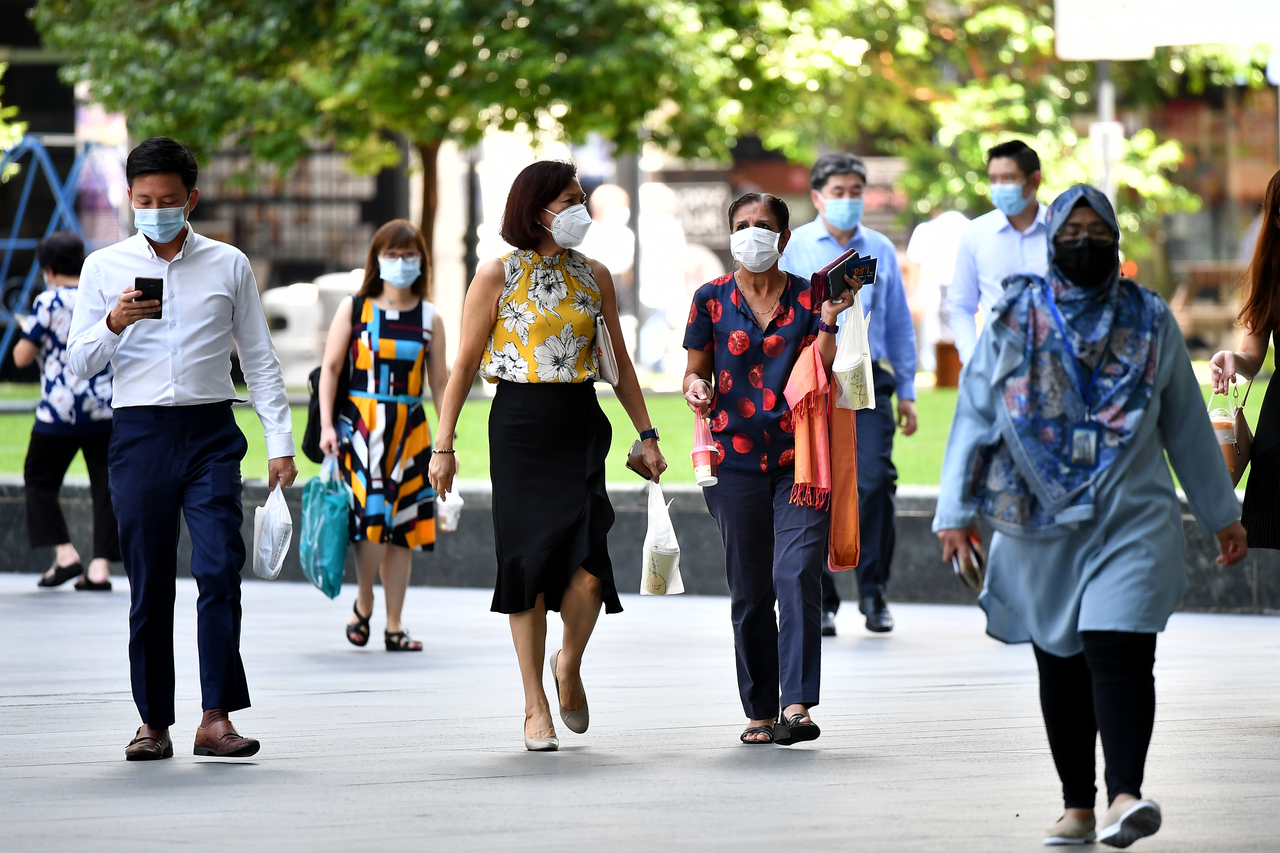Full-time employed residents work fewer hours a week compared with a decade ago: MOM
Sign up now: Get ST's newsletters delivered to your inbox

Among full-timers, the average hours worked per week fell across most occupational groups over the year.
ST PHOTO: LIM YAOHUI
Calvin Yang
Follow topic:
SINGAPORE - Full-time employed residents put in fewer hours of work a week this year, compared with a decade ago.
An annual report by the Ministry of Manpower (MOM), released on Wednesday (Dec 1), revealed that full-timers worked an average of 45 hours a week this year, about four hours fewer than the 49.2 hours a week in 2010.
This is also lower than the 45.4 hours weekly last year, according to the advance estimates for the resident labour force.
The decline was observed across industries but was felt more sharply in those affected by the Covid-19 pandemic.
Industries such as transportation and storage, food and beverage services, and accommodation and retail trade saw higher than average declines in usual hours worked, MOM said in its report, which is based on mid-year data.
"The decline reflects the ongoing dining and travel restrictions which have impacted the volume of work available," MOM added.
On the other hand, part-timers in most industries worked longer hours over the past year. Part-timers put in an average of 21.5 hours a week this year, compared with 21.2 hours last year.
But those in sectors impacted by Covid-19 curbs saw a decline in work hours, MOM said.
Among full-timers, the average hours worked a week fell across most occupational groups over the year. They include professionals, managers, executives and technicians (PMETs), and clerical, sales and service workers.
Cleaners and labourers, however, saw a slight increase in work hours.
MOM said: "This reflects demand for more frequent cleaning and disinfection in commercial and industrial buildings due to the Covid-19 situation, and longer working hours among manufacturing labourers and attendants in the healthcare sector."
With work-from-home being the default for workers due to the evolving Covid-19 situation, the proportion of employed residents on such arrangements remained high at 46 per cent in June this year. This, however, was lower than the 49 per cent a year ago, as more workplaces allowed more workers back on site this year.
Industries where there is greater need for workers to be on site, use of specialised equipment, or face-to-face interactions saw more workers returning to the physical workplace. These include construction, education, health and social services, and manufacturing and professional services.
Observers highlighted how some workers reportedly feel more stressed when working remotely.
Dr David Leong, managing director of human resources firm PeopleWorldwide Consulting, said there would need to be a new definition of work hours with work-from-home arrangements.
"The lines are blurry when workplaces are mostly situated at home," he added.
On full-timers clocking less time at work, Professor Lawrence Loh from the National University of Singapore Business School said: "On one hand, it may suggest that less work is actually available due to a variety of reasons such as lessened economic opportunities.
"On the other hand, it may be that there are productivity gains due to the use of technology - in other words, people are working smarter, not harder."

